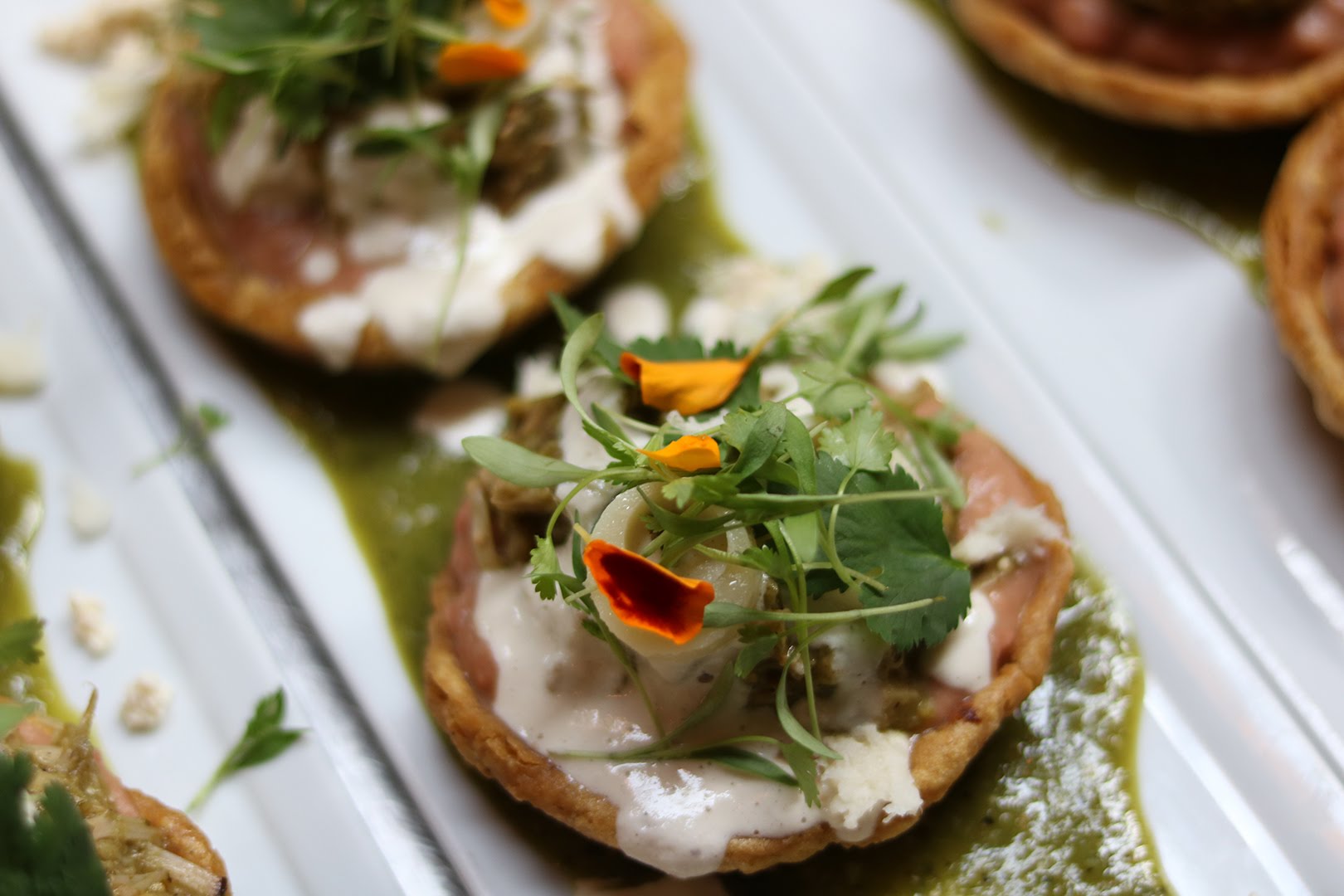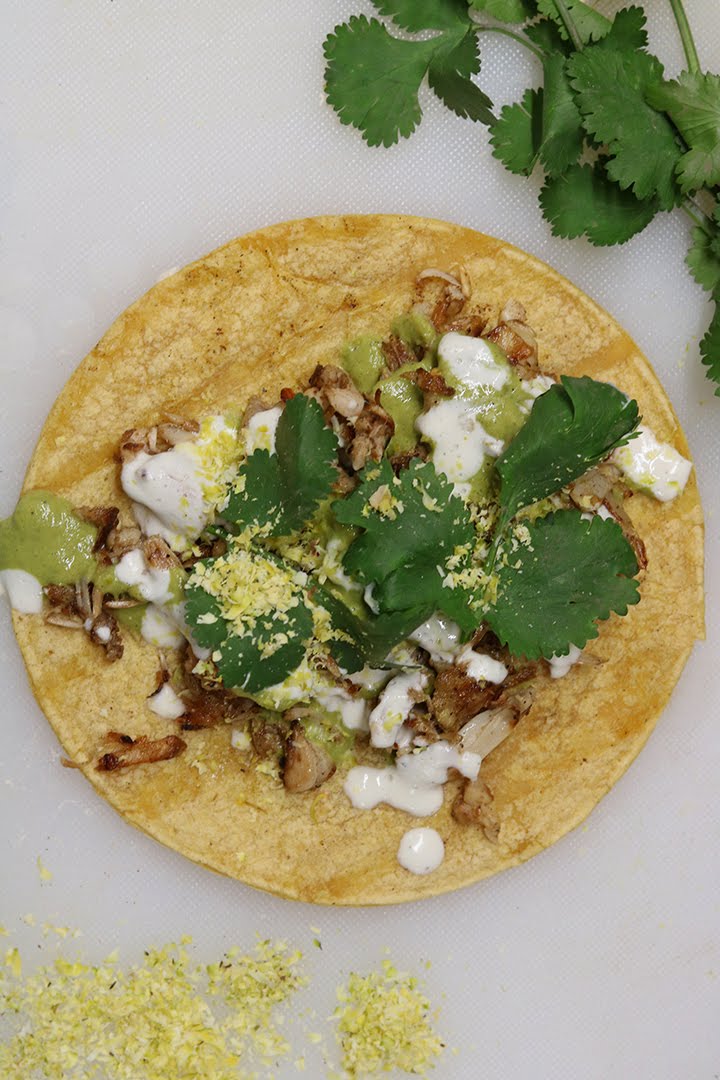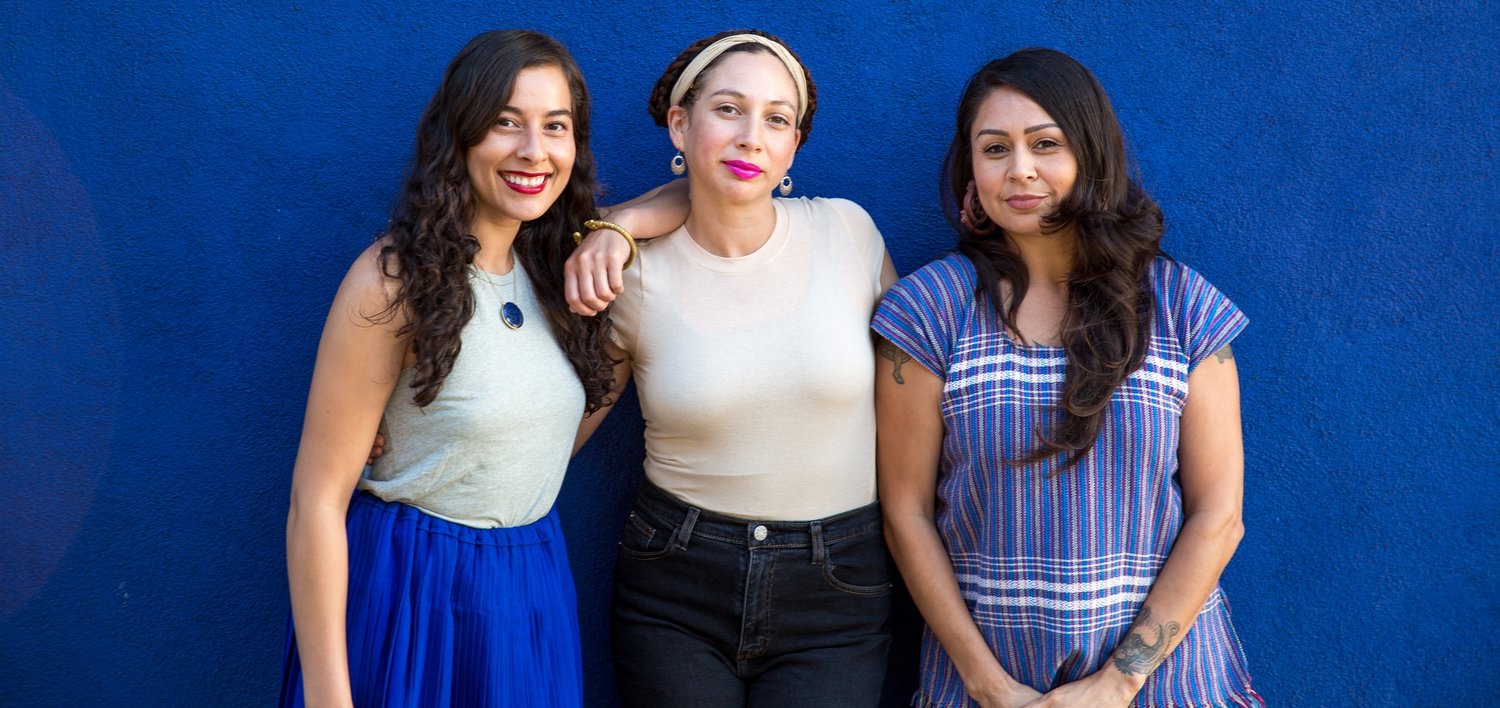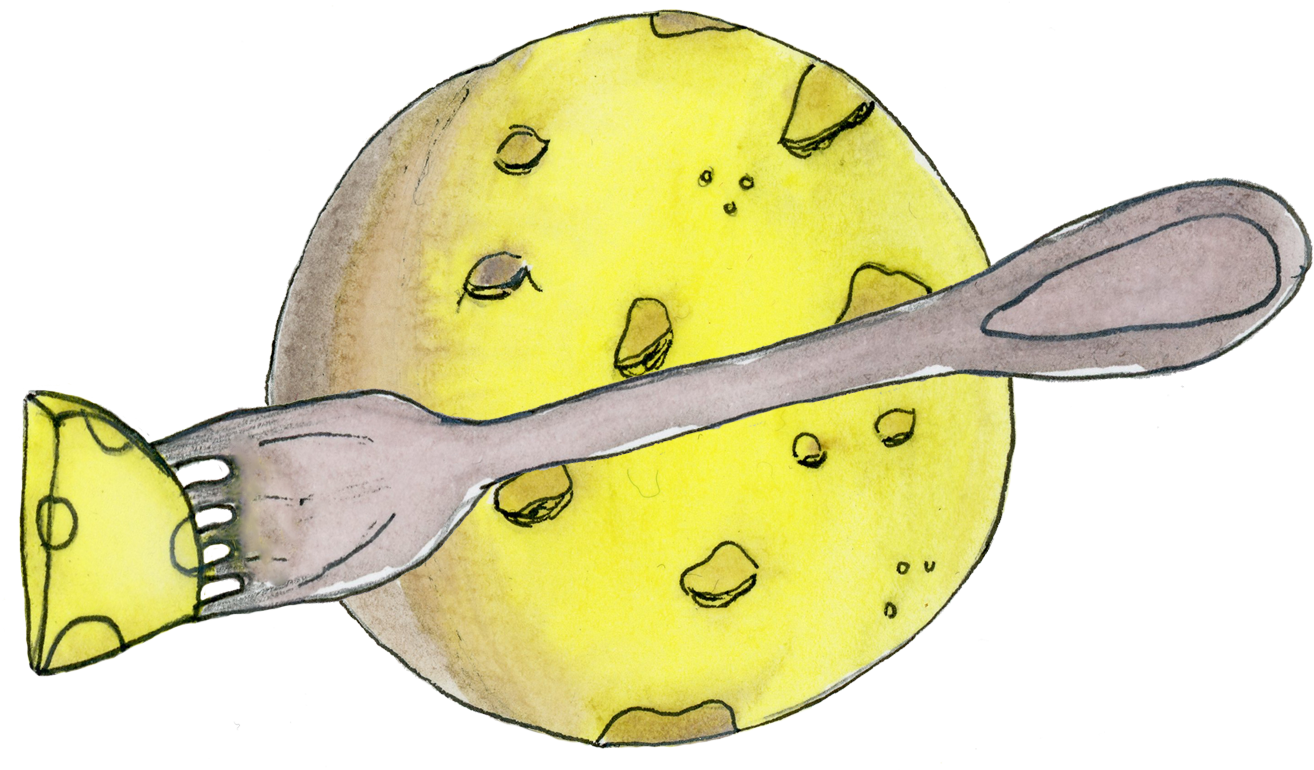interviews
Jocelyn Ramierz May 2018


Where are you from? What kind of food did you eat with your family growing up?
I grew up in South Gate, a southeast LA neighborhood. What I grew up eating kind of depended on my mom’s energy level at the time – she worked full time for a yogurt company. So sometimes she would come home and make more traditional meals like stuff my grandmother used to make, which we called pisados, like nopales con carne. Sometimes there was meat but it could also be veggies in a stew form. When we were busy and we didn’t have time to prepare food, we ate at fast food spots. We did a lot of El Pollo Loco, Subway, a lot of tacos.
Todo Verde started in 2015, so its gonna be three years in August.
Woah congrats.
Thank you. It just keeps going. I started it because of a few things. Growing up, when I started to get more intrigued by food I would watch PBS food shows, Food Network – I would binge watch and try to learn new recipes. When I was a teenager I started to think of myself as a foodie. I started following Jonathan Gold and Anthony Bourdain, checking out places that they were claiming to be the greatest food in LA. But at that point food was still just a hobby to me, it wasn’t really a career choice for me yet. I was in higher education and decided it was time for me to make a shift – I started to see my family dealing with health issues. My dad is a two-time cancer survivor and also diabetic. My mom has high cholesterol and high blood pressure. In my early twenties, I started dealing with an early thyroid issue, I wasn’t feeling well. I noticed that when I was eating things that were fat or just saturated in oil or salty, I felt lethargic; my eyes would burn and turn red.

Oh no!
It was almost like my body was telling me, “Hey something’s up and its with the food you’re eating and I don’t like it.” But obviously I was still choosing to eat the things that just tasted awesome but I didn’t really think about the fact that they were taking on my body. So I think that the real turning point was my dad’s cancer. The first time was kind of like, “Ok, what are we doing?” In my personal journey, I started to walk towards being vegetarian. It wasn’t until his second battle with cancer where I was realized, I’m seeing my body function a lot better based on the changes that I’m trying to make, which were small changes. So I told my family that we were gonna clean out the pantry, go to the farmer’s market, Whole Foods, Trader Joe’s, but we’re gonna figure this out and start with a clean slate. So I put my dad on a superfood smoothie diet, I started making a lot of soups, all veggie based; he was pretty much vegan for about a month leading up to his surgery. His doctors were actually shocked that he was looking better, that the cancer wasn’t progressing as it should’ve been.
That’s amazing.
For my mom, it was telling her to look at my abuelita and the way she ate growing up, when she lived in el rancho in Mexico. My grandmother lived to ninety-six, she just passed away last year. Sometimes she would argue, “Oh we would sometimes eat chicken or meat every once in a while in Mexico.” But that was different.
It wasn’t every day –
Ya it wasn’t every day. Also it wasn’t a chicken or an animal growing up in this current industrial food system, it was an animal eating the way they were supposed to eat. I started to figure out the loopholes that the government had within the agriculture industry and shared that with family. It wasn’t just changing the food but also figuring out why it was important to change the food. All of those things led me to wanting to change my lifestyle. I also had practiced yoga for a long time so I went and stayed on an ashram, learned about Ayurveda. When I came back, I knew I needed to set up a plan and leave my teaching job.
What were you teaching?
I was teaching social justice and civic engagement.
Wow you do everything.
And leadership for community building and some intro college classes for design students. I was there for about seven years but after my time on the ashram and helping my family change their mindsets about food, I decided it was time to go down the more healing and health path. I started at local farmer’s markets using local ingredients that I found there and made smoothies and agua frescas – that was my way to get my food in the door. At that point, I couldn’t open a restaurant or do food because I didn’t have enough experience. During that time, I also went to Matthew Kenney Culinary School where I learned new techniques for working with plant based ingredients. Based on what I learned, I slowly built a full plant based menu. Our menu is available for catering orders and pop up events. Eventually, our goal is to open a brick and mortar location.
Really?!
Ya, I mean it’s something I’m looking into because I really want to provide that space.
When I came to your Decolonizing Your Diet workshop at the LA Kitchen, you were talking about sitting down with your grandma before she passed away and getting recipes. Can you talk about what that was like and what kinds of stories and recipes she passed down to you?

And leadership for community building and some intro college classes for design students. I was there for about seven years but after my time on the ashram and helping my family change their mindsets about food, I decided it was time to go down the more healing and health path. I started at local farmer’s markets using local ingredients that I found there and made smoothies and agua frescas – that was my way to get my food in the door. At that point, I couldn’t open a restaurant or do food because I didn’t have enough experience. During that time, I also went to Matthew Kenney Culinary School where I learned new techniques for working with plant based ingredients. Based on what I learned, I slowly built a full plant based menu. Our menu is available for catering orders and pop up events. Eventually, our goal is to open a brick and mortar location.
Wow that’s crazy.
At ninety-six, she didn’t know the story of how the Spaniards broke down and dismantled a lot of indigenous communities because it was before she was born. So it was just asking questions and trying to figure out who we were and how we got this way. The recipes she passed down were for tamales. Pipián, which is sort of our version of mole, includes a guajillo, pumpkin and sesame seed sauce that you eat over chicken, but, we use it over jackfruit.
You use it in your business? The same recipe?
The same recipe, ya.
That’s amazing! That’s really special.
Or one thing that just added to our catering menu is sopa de fideo, because that was my jam. If my abuelita knew I was coming over, she would make sopa de fideo because I absolutely loved it. It’s a noodle soup with a tomato base but different than your typical tomato soup. It has a little touch of cumin, veggies, a little kick of spice – it definitely tastes Mexican.
What are the noodles like?
The noodles, you actually toast them in oil before cooking them in the soup. They get this toasty flavor kind of like how we cook our rice too, and then you add the broth to it. She used to put queso fresco over it. So not too long ago we had a couple of catering orders in which they told me I could make whatever I wanted, test out some recipes. So I tested the sopa de fideo, and my mom was in the kitchen – my mom does help out sometimes – as I was pouring it out I asked her, “Doesn’t it look and smell like abuelita’s soup?” And she was like “Ya, that’s it.” She told me, “Oh, your abuelita would be so happy.”
That’s the best compliment.
Ya, so just trying to recreate those same flavors and that same amount of care and attention without using a chicken. I try to figure out things like how to use a tofu base to make a queso fresco.
And you did that?
Ya. You can make it out of macadamia nuts or cashews. But for this one, what I do is completely try to dry out a piece of tofu as much as possible and then incorporate a little bit of lemon juice, a little bit of apple cider vinegar, and kind of heavy on the salt.
What’s the base for that?
That’s a potato, carrot, cashew base.
Oh my god! You’re blowing my mind right now.
So people really love that. So I put that cheese on my menu with a chipotle roasted cauliflower. We sprinkle a lot of chipotle, cayenne, over roast it and put it over a bed of that cheese.
So apart from Todo Verdes you are also one of the creators of Across Our Kitchen Tables. Can you tell me about how you and your fellow creators started that project?

Ya so Claudia Serrato, Valeria Duenas, and I, each have catering or food businesses. Claudia is one of the main people who helped push me in the direction of becoming vegan. Her work is in indigenous veganism, indigenous food ways, and feminism. I went to a workshops that she led where she was talking about how not all indigenous communities were vegan – there were ceremonies around animals but they relied heavily on a plant based diet. She wanted us to talk about the concept of intersectionality, about how feminism and veganism are similar – I didn’t really see the connection. She asked people in the audience to say what they thought when they thought of feminism. People said things like “You don’t exploit a female body for capitalist reasons,” and “The right to choose,” just having respect generally for a female body. She brought up that the industrial food system is mostly made up of female bodies. All the dairy that we consume – milk, cheese, eggs – all come from female bodies. A lot of the meat that we consume also comes from female animals.
Wow that’s so true.
Ya, it was something I hadn’t thought of until that day. She’s been a great friend and mentor and saw the work I was doing with Todo Verde. With food you never know if people are going to feel competitive. But in reality, all three of us really support each others’ businesses and projects and we all felt that our real competitor were the fast food joints.
I also feel like women tend to lean towards collaborating and supporting each other.
Exactly. So when we started connecting we were asking each other questions like, “How do you make your social media platforms better? Who built your website? What do you use for insurance? What do you use for accounting?”
Things people really don’t talk about often but everyone wants to know the answers to.

Yes, so as we were having these conversations we realized we should provide a space where women can come together, specifically women of color and allies, to talk about these topics. Then, this grant opportunity presented itself through the Center for Cultural Innovation– we applied as culinary artists, got the grant, and did it. We’ve been building the curriculum as we go. If we get the grant again we’re thinking of doing quarterly intensive one month sessions that are spread out. We decided to host a series of skill shares each dealing with different topics like vision, insurance, licensing, permitting, this next one will be about social media and branding. The last skillshare will be costing, scaling, pricing, knife skills, things like that. We have a culminating symposium that we’re planning which will be in August and we just want that to be like a series of talks and panels from other folks who are doing similar work who can share on their experience in the food industry.
It’s really inspiring.
Ya it’s been cool to see how many women are gravitating towards that space. We started with a circle of thirty women, we held it like a women’s circle. The next one was fifty so we couldn’t do that like a circle – we didn’t have enough space. But, just to see people showing up being really interested, I’m excited to see how it’ll evolve.
